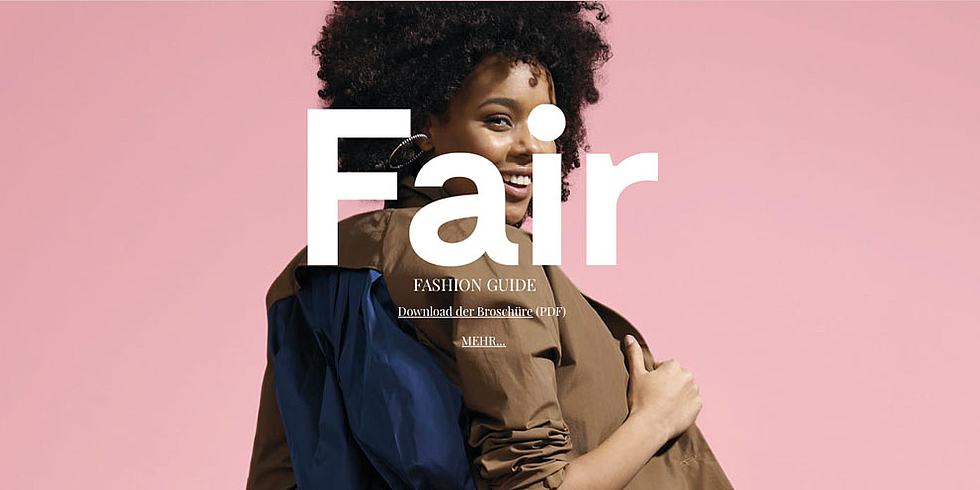Fair Fashion Guide
The textile and fashion industry is growing from year to year and is regarded as one of the world’s most significant economic players. However, it is one of the industries the dark sides of which are not visible for the consumers – ecological and economic factors are some of them. The newly launched Fair Fashion Guide is supposed to help create an awareness of the background of the textile industry and to reinterpret fashion. In times of fast fashion, garments have become some sort of disposable product. Many consumers update their wardrobe every season – and dispose of outdated items in no time. Those who still believe they pay attention to quality when buying textiles, refer to quality only with regard to the value of the product, without considering the manufacturing process.
The Fair Fashion Guide created by Nicole Hardt and Friederike von Wedel-Parlow, which was published in April, is intended to help broaden the concept of quality beyond the quality of the textiles towards the entire supply chain and manufacturing conditions. This is to be achieved in particular with the well thought-out design of the Fair Fashion Guide: “The Fair Fashion Guide is written in the language of a fashion-oriented target group and is presented in a similar form to a magazine. It provides inspiration and ideas for a different way of acting and it does not reduce the customers to buyers only, but it describes them as actors, or appraisers.”
The aim of the Fair Fashion Guide is above all to inspire a shift of awareness with the consumers to reflect their consumption, the backgrounds and costs of the fashion industry to understand quality above all as an attitude, including the desire for fair working conditions, fair wages and high-quality materials. The two authors of the Fair Fashion Guide intend to target the readers in particular by playing with different levels, visual components and detailed articles.
The Fair Fashion Guide presents a view of the fashion industry in numbers, shows the actual costs of fashion and the distribution of profits, it presents the wardrobe of the future and offers tips for consumers on ethical consumerism. Furthermore, the authors describe the fashion industry’s complex supply chain, view the textile industry’s perspective from different angles and recommend Internet portals selling ecological and fair fashion. On the Fair Fashion Guide’s website you can find expert reviews in video clips and fashion providers through the integrated Getchanged platform.
Plans are already made to continue this project. “There are so many interesting topics and stories to tell from the individual areas”, Nicole Hardt and Friederike von Wedel-Parlow say.
Contact
Tanja Mühlhans
Leitung Kreativ- und Medienwirtschaft, Digitalwirtschaft, Projekt Zukunft


